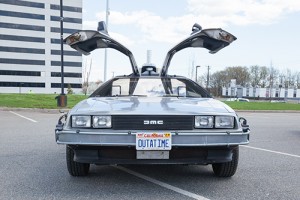 If you have tech lovers on your gift list this year, here are a few ideas that are sure to bring them holiday cheer.
If you have tech lovers on your gift list this year, here are a few ideas that are sure to bring them holiday cheer.
Storage
I wrote a blog last year about the capacity of a one terabyte disk drive which are becoming standard in new personal computers. I thought that a terabyte of storage should be more than enough for a lifetime of computing. I failed to take into account the rising popularity of personal networks that store not only computer files but also entertainment such as movies and music. You can now access movies and shows from your smart TV that are stored on a drive attached to your network. To accommodate your growing storage needs, Western Digital offers My Cloud Mirror, which is network attached personal cloud storage. Your files are mirrored in case of disaster and are available from your TV, computer, or mobile device. You can watch your stored movies and access your pictures and data files from anywhere. This ranges from two all the way up to 12 terabytes to keep your favorite tech person going for a long time.
Paper Airplane 2.0
PowerUp paper airplanes may be just the gift for that person who has everything. These are not the airplanes we made as kids, they are a combination of paper and technology. The basic kit comes with a small motor but you still have to supply the paper and the navigation skills. Version 3.0 comes with a Bluetooth enabled module that allows you to control the plane from your smartphone or tablet. This is a Kickstarter project that has gone into production with different products. You can also pre-order the new PowerUp FPV kit that gives you first person view of the flight through a Google Cardboard viewer. There is even a boat for the sailor on your list.
Gift For The Budding Techie
A Raspberry Pi computer is perfect for the budding techie in your life. Made by a UK educational foundation of the same name, this is basically a low cost complete computer on a circuit board. It comes with HDMI and USB ports for connecting input and output devices and can be loaded with a special version of Linux as the basic operating system. There is no disk drive, but everything can be stored on SD cards. It represents a return to basic computing and experimentation. There is an ardent worldwide fan base for this product and no shortage of ideas posted to the web, from robot controllers to music and video servers to Christmas light display hubs. The Raspberry Pi Zero starts at $5 and the Pi 2 B runs $40. I have written before about the maker movement and this gift is a wonderful way to join in the fun.
It’s All In The Gesture
Gest is a wearable device that allows you to control your computer or tablet or smartphone through hand movements. It is still in Kickstarter mode and has been successfully funded so the device can be pre-ordered now. This is an attempt to get away from the traditional keyboard or touchpad. Personally, my fingers don’t seem to be precise when using my smartphone so I am looking forward to trying one of these in the future. This could be that gift that I give to myself.
Thoughts
There are a lot of products available for your tech friends, from the inexpensive to the unaffordable. I have chosen just a few here that I think are reasonable, useful, and sometimes just plain fun. What gifts are you giving your friends this holiday season? Let me know.
Kelly Brown is an IT professional and assistant professor of practice for the UO Applied Information Management Master’s Degree Program. He writes about IT and business topics that keep him up at night.










